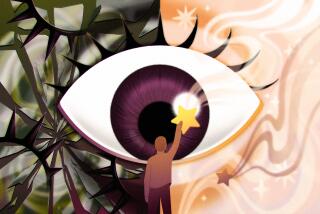Boo!
USC sociologist Barry Glassner has written a gutsy expose of one of the most widespread delusions of our time: misplaced fear. Glassner demonstrates with precision and clarity that Americans today have built what he calls a “culture of fear” by buying into rumors and hearsay that pass for facts. Who traffics in fear-mongering? Follow the money, says Glassner, to the politicians when they win elections by grossly exaggerating (and sometimes outright lying about) crime and drug use percentages under their opponent’s watch. To advocacy groups that profit because nothing drives fund-raisers faster than expectations of doom, which promise to be thwarted just in time if the donor’s contribution is beefy enough. To conservatives decrying the demise of the family, and to liberals proclaiming the destruction of the environment.
Religion also plays on our fears by hyping the doom-and-gloom of this world to make the next world seem all the more appealing or frightening. An evangelical Christian friend of mine recently insisted that we are in the “end times” because the Bible prophesied an increase in immorality and malfeasance. Because everyone knows crime is an epidemic problem in America that worsens by the year (“just look at the recent Colorado shooting,” he enthused), the end is nigh. On the same day as my friend’s comments, the FBI released its findings that we are in the midst of the longest decline in crime rates since the bureau began collecting data in 1930.
Such examples illustrate a paradox: We are more fearful at the very time when things have never been so good. “Give us a happy ending and we write a new disaster story,” says Glassner. As storytelling animals, we spin dramatic tales of calamity and misfortune. “In the late 1990s the number of drug users had decreased by half compared to a decade earlier,” yet the “majority of adults rank drug abuse as the greatest danger to America’s youth.” Ditto the economy, where “the unemployment rate was below 5% for the first time in a quarter century. Yet pundits warned of imminent economic disaster.” In this century alone, modern medicine and social hygiene practices and technologies have nearly doubled our life spans and improved our health immeasurably, yet Glassner points out that if you tally up the reported disease statistics, out of 266 million Americans, 543 million of us are seriously ill.
How can this be? To quote Disraeli: “lies, damn lies, and statistics.” We may be good storytellers, but we are lousy statisticians. Glassner shows, for example, that women in their 40s believe they have a one in 10 chance of dying of breast cancer, but their real lifetime odds are more like one in 250. In addition, he notes that some “feminists helped popularize the frightful but erroneous statistic that two of three teen mothers had been seduced and abandoned by adult men,” when in reality it “is more like one in 10, but some feminists continued to cultivate the scare well after the bogus stat had been definitively debunked.” The bigger problem here is the law of large numbers, or as the magician Penn Jillette likes to say: “million to one odds happen eight times a day in New York.” In America, million to one odds happen 266 times a day, and of those, the most sensational dozen make the evening news, especially if captured on video.
Herein lies the problem. We are daily fed numbers we cannot comprehend about threats to our security we cannot tolerate. But better safe than sorry, right? Wrong, says Glassner. Pathological fear takes a dramatic toll on our psyches and wallets: “We waste tens of billions of dollars and person-hours every year on largely mythical hazards like road rage, on prison cells occupied by people who pose little or no danger to others, on programs designed to protect young people from dangers that few of them ever face, on compensation for victims of metaphorical illnesses, and on technology to make airline travel--which is already safer than other means of transportation--safer still.”
Of all the institutions feeding our fears, the media takes center stage for sensationalism (“If it bleeds, it leads” is the old adage). Glassner cites an Emory University study showing that the leading cause of death--heart disease--received the same amount of press coverage as the 11th-ranked, homicide. Not surprising, drug use, the lowest-ranking risk factor associated with serious illness and death, received as much attention as the second-ranked risk factor, poor diet and lack of exercise. From 1990 to 1998, America’s murder rate decreased by 20% while the number of murder stories on network newscasts increased by an incredible 600% (and this doesn’t include O.J. stories). “The short answer to why Americans harbor so many misbegotten fears is that immense power and money await those who tap into our moral insecurities and supply us with symbolic substitutes.”
The long answer is in the details so well documented and presented in this important book, which has the courage to point out that Gulf War Syndrome is a chimera, that television does not cause violence, that Satanic cults are phantasmagorical, that many recovered memories of child abuse are nothing more than false memories planted by bad therapists and that silicone breast implants cause nothing more than metastatic litigation.
So as the nation wrings its collective hands in despair over what to do about the murders at Columbine High School and their media-driven clones, we would be well advised to remember the law of large numbers, the illusory nature of fear and our penchant to focus on the most egregious events. Most of what we dread, as Glassner convincingly argues, is the vaporous byproduct of a culture of fear of which we are both creators and victims.
More to Read
Sign up for Essential California
The most important California stories and recommendations in your inbox every morning.
You may occasionally receive promotional content from the Los Angeles Times.










